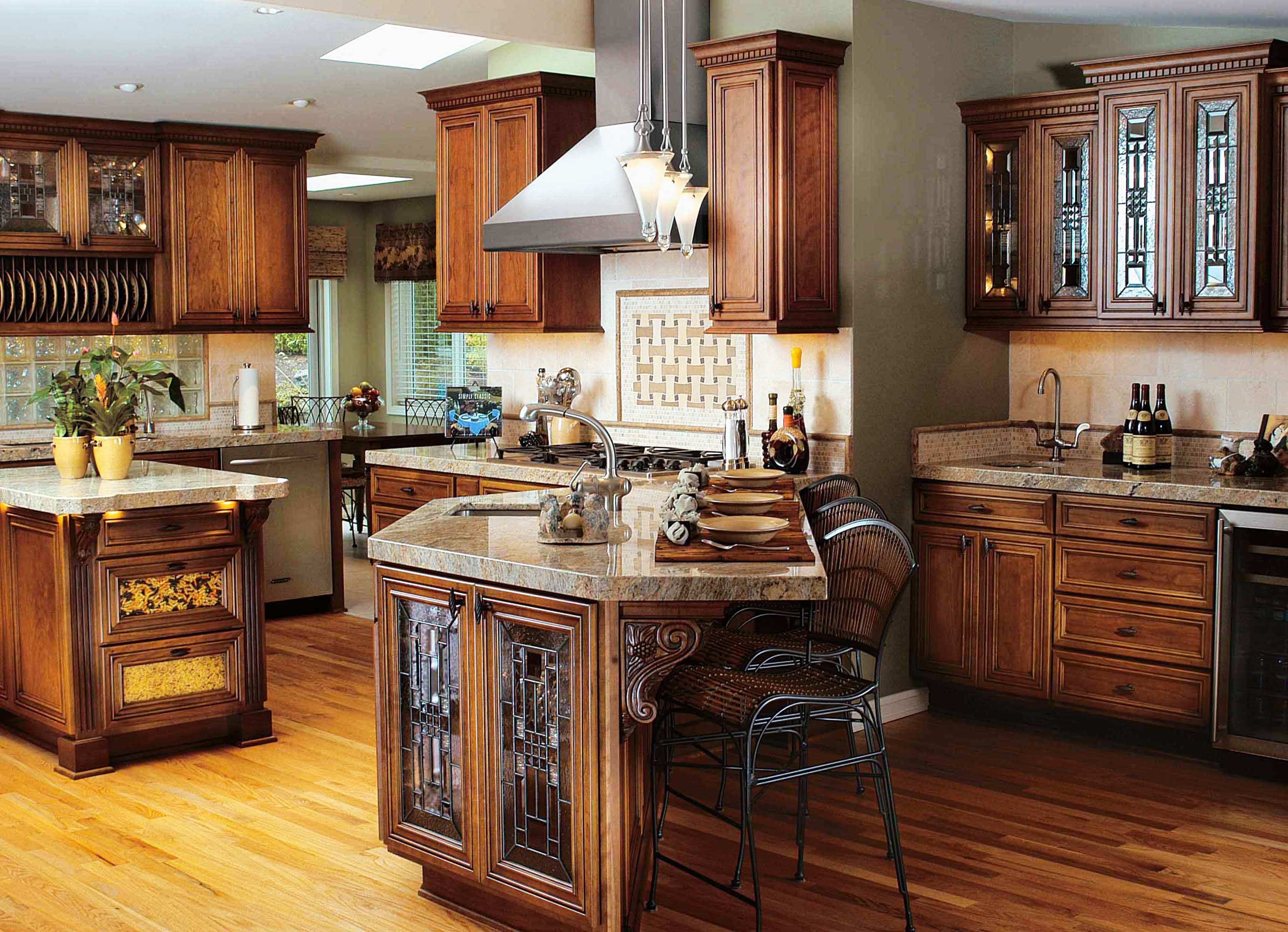Material and Construction Considerations: Craftsman Style Mission Style Kitchen Cabinets

So, you’re thinking about Craftsman and Mission style kitchen cabinets? Fantastic choice! But let’s talk wood, because choosing the right lumber is like picking the perfect spice – it makes or breaks the dish. We’ll also delve into the nitty-gritty of construction and finishes, because a beautiful cabinet is more than just a pretty face; it’s about the craftsmanship that makes it sing.
Commonly Used Wood Types
Oak, cherry, and walnut are the usual suspects for these styles. Oak, the workhorse, offers incredible durability and a classic, sturdy look. It’s relatively inexpensive, too, making it a popular choice. Think of oak as the reliable friend who’s always there for you, never flakes, and can handle a bit of roughhousing. Cherry, on the other hand, is the sophisticated cousin. It boasts rich tones that deepen with age, adding a touch of elegance. However, it’s a bit pricier and softer than oak, requiring more tender loving care. Finally, walnut is the luxurious diva. Its dark, dramatic grain is undeniably stunning, but it’s also the most expensive and requires meticulous maintenance. Think of it as the high-maintenance friend who always looks fabulous, but demands a lot of attention.
Joinery Techniques
Now for the fun part – the joinery! Craftsman and Mission styles emphasize strong, visible joinery, a testament to the quality of construction. Mortise and tenon joints are a staple, where a projecting tenon (a sort of wooden peg) fits snugly into a mortise (a precisely cut hole). Imagine a strong handshake – that’s the mortise and tenon in action. Dovetail joints, those interlocking finger-like connections, are another classic. They’re incredibly strong and visually striking, showcasing the skill of the craftsman. Picture two hands clasped tightly together – that’s the beauty and strength of a dovetail. These joints are not just functional; they’re a statement of quality and artistry.
Impact of Finishes
Choosing the right finish is crucial. A stain allows the wood’s natural beauty to shine through, highlighting the grain and color variations. A dark stain on walnut, for instance, accentuates its dramatic grain, while a lighter stain on oak creates a more rustic feel. Paint, on the other hand, offers a completely different aesthetic. A painted finish provides a clean, crisp look, often seen in more modern interpretations of these styles. However, it hides the wood grain, so choose wisely! A poorly chosen finish can make even the most exquisite cabinetry look drab, while a well-chosen finish can elevate the piece to a work of art. Imagine a perfectly tailored suit – the fabric is beautiful, but the cut and finish make it truly exceptional.
Integrating Craftsman and Mission Styles in a Modern Kitchen
.jpg)
So, you’ve got this amazing idea: a kitchen that screams “Craftsman meets Mission, but with a modern twist!” Sounds ambitious, right? Don’t worry, it’s totally doable. Think of it as a delicious fusion dish – the best of both worlds, with a dash of contemporary flair. We’re talking a kitchen that’s both warm and inviting, yet sleek and sophisticated. Let’s dive in!
A Modern Kitchen Design Concept Blending Craftsman and Mission Styles, Craftsman style mission style kitchen cabinets
Here’s the thing: blindly throwing together Craftsman and Mission elements won’t cut it. It needs a cohesive plan. Think of it like arranging a really cool band – you need the right instruments and a killer arrangement. This design concept focuses on achieving harmony and balance.
- Color Palette: We’re going for a warm, earthy palette. Imagine rich, dark walnut cabinetry (think Mission style) accented with lighter oak or maple (Craftsman touch). Walls could be a soft, neutral cream or a slightly grayish-beige to complement the wood tones. Think of a cozy, sun-drenched cabin in the woods, but with a chic update.
- Countertop Materials: To maintain that modern edge, consider a sleek quartz or concrete countertop. These materials provide durability and a contemporary feel, contrasting beautifully with the warmth of the wood cabinetry. A honed finish on the countertop will add a touch of sophistication without being overly glossy.
- Appliance Choices: Stainless steel appliances are a must for that modern look. But to tie it all together, choose appliances with clean lines and minimal detailing. Avoid anything too flashy or ornate; we want subtle elegance, not a disco ball.
Seamlessly Blending Styles with Contemporary Features
The key to success here is balance. You don’t want one style to completely overshadow the other. It’s about finding that sweet spot where the traditional elements enhance the modern features, rather than clashing with them. Think of it as a carefully choreographed dance.
- Cabinet Hardware: This is where you can subtly play with both styles. Consider simple, understated pulls in a brushed nickel or oil-rubbed bronze finish for a blend of Craftsman simplicity and Mission’s subtle elegance. Avoid anything overly ornate or fussy.
- Lighting: Integrate both styles through lighting. Incorporate recessed lighting for a modern touch, while also including a statement pendant light above the island – perhaps one with a Craftsman-inspired geometric design or a Mission-style wrought iron frame. This adds visual interest and balances the modern and traditional elements.
- Backsplash: A subway tile backsplash in a neutral color (white, cream, or light gray) provides a clean, modern contrast to the wood cabinets. It offers a classic touch that works beautifully with both styles, maintaining a sense of timelessness without overwhelming the space. A subtle pattern in the tile could add a touch of personality without being overly distracting.
